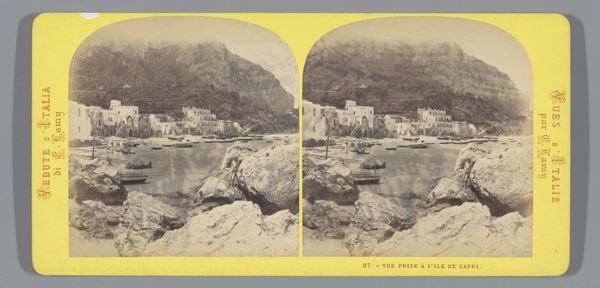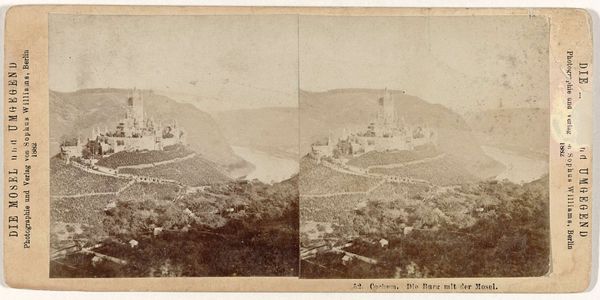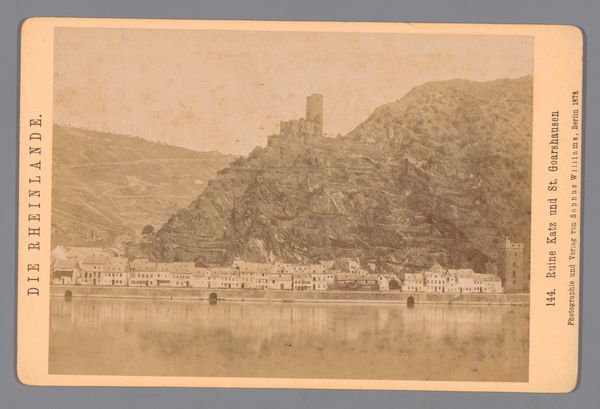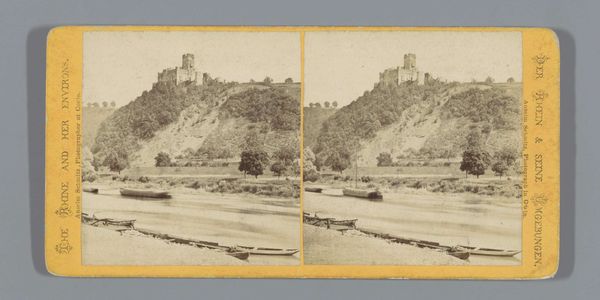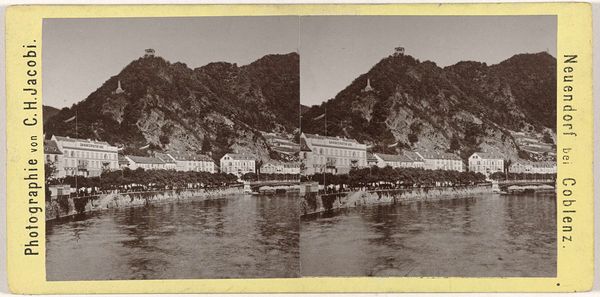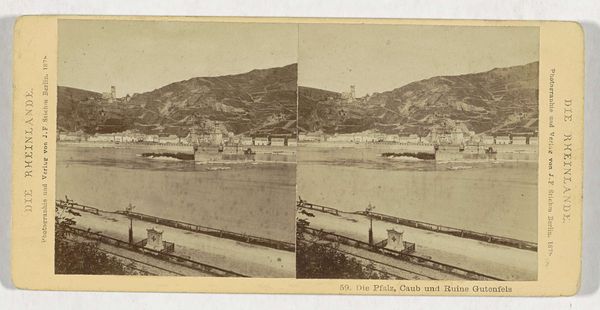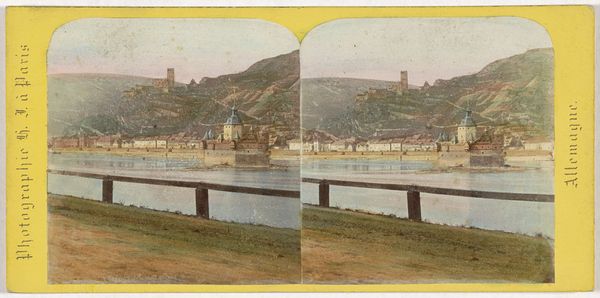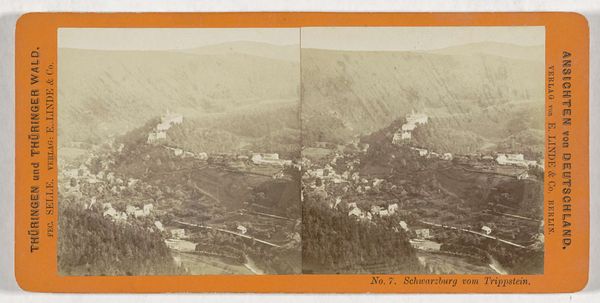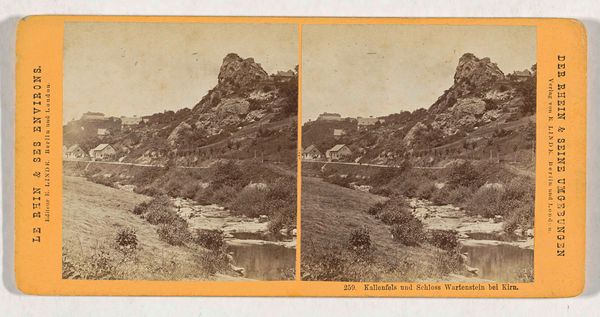
Dimensions: height 85 mm, width 176 mm
Copyright: Rijks Museum: Open Domain
Curator: Let's discuss this stereoscopic gelatin-silver print titled "Burcht Katz en Sankt Goarshausen aan de Rijn" by Johann Friedrich Stiehm, created in 1878. What are your initial thoughts? Editor: Immediately, I'm struck by a sense of melancholy. The sepia tones and the slightly blurred focus contribute to a feeling of looking back at a bygone era, tinged with a certain loss. The framing feels staged; as if this "natural" moment in history has been set before me in a proscenium. Curator: I see your point about the tonality lending itself to nostalgia. The composition, however, is more fascinating to me. Notice how Stiehm employs the stereoscopic format, effectively duplicating the image to create an illusion of depth. It emphasizes the layered elements – the river, the town, and the commanding castle on the craggy hill – inviting the eye to journey through the pictorial space. Editor: Absolutely. And I find the architectural choices interesting from a historical and power perspective. Dominating the scene are the remnants of Katz Castle—symbols of medieval power—set against the small, seemingly delicate houses on the riverbank, visually reminding us of societal structures and who inhabits those hierarchies. Curator: From a purely formal perspective, look at the textures—the smooth surface of the water juxtaposed against the rugged stone of the castle. And then observe the chromatic scale—subtle shifts of the grey-brown tonal scale reflecting an understated but competent attention to value. Editor: That’s fair, however, consider that landscape photography during this era was heavily influenced by Romanticism. Stiehm wasn't simply documenting a location. I see an idealised image. How were the lives of women or ethnic minorities during this period within the Rhine? That type of imagery isn't present, so there are many voices of history being lost in translation here, even in this seemingly tranquil scene. Curator: A potent reminder to resist ahistorical readings. Thanks for adding that crucial contextual layer. I can see how even within its technical merits, this work carries broader societal and power narratives. Editor: Indeed. Analyzing this photo now gives us a glimpse of the selective storytelling that shaped our understanding of that era. The question is, who gets to frame history?
Comments
No comments
Be the first to comment and join the conversation on the ultimate creative platform.
